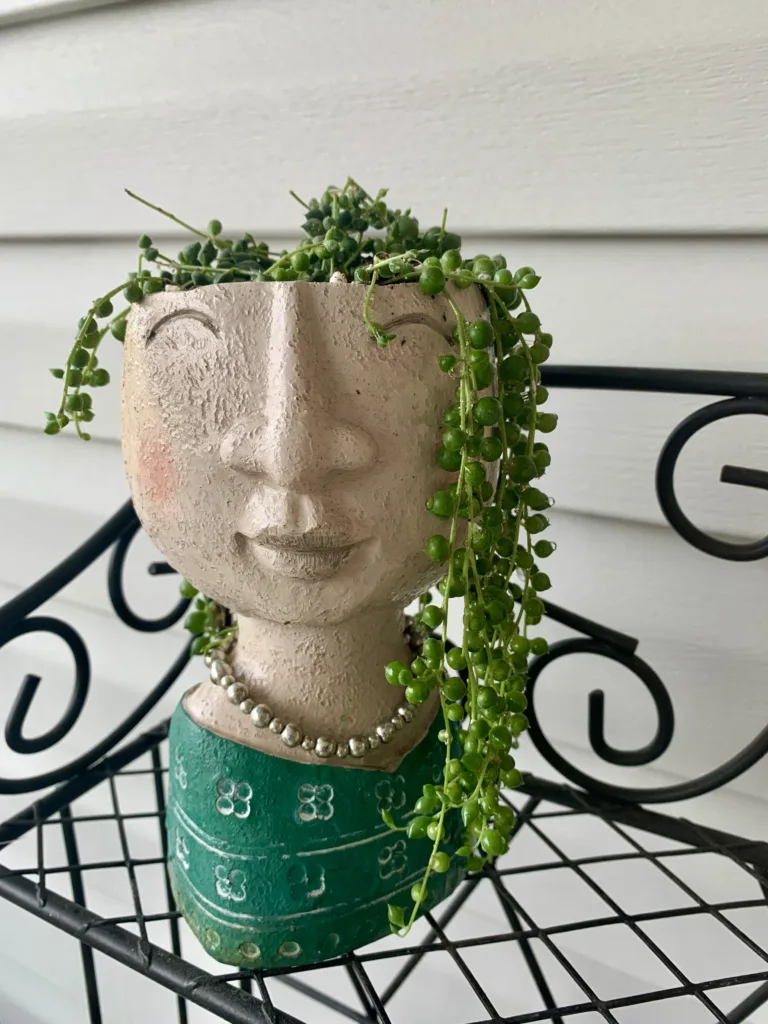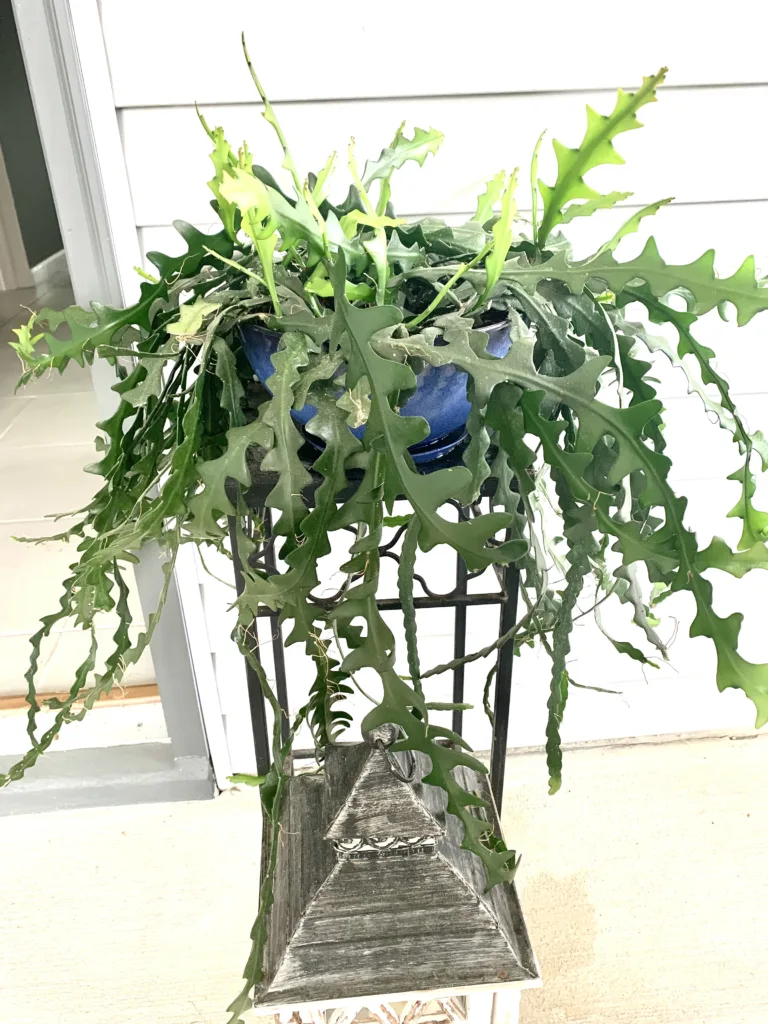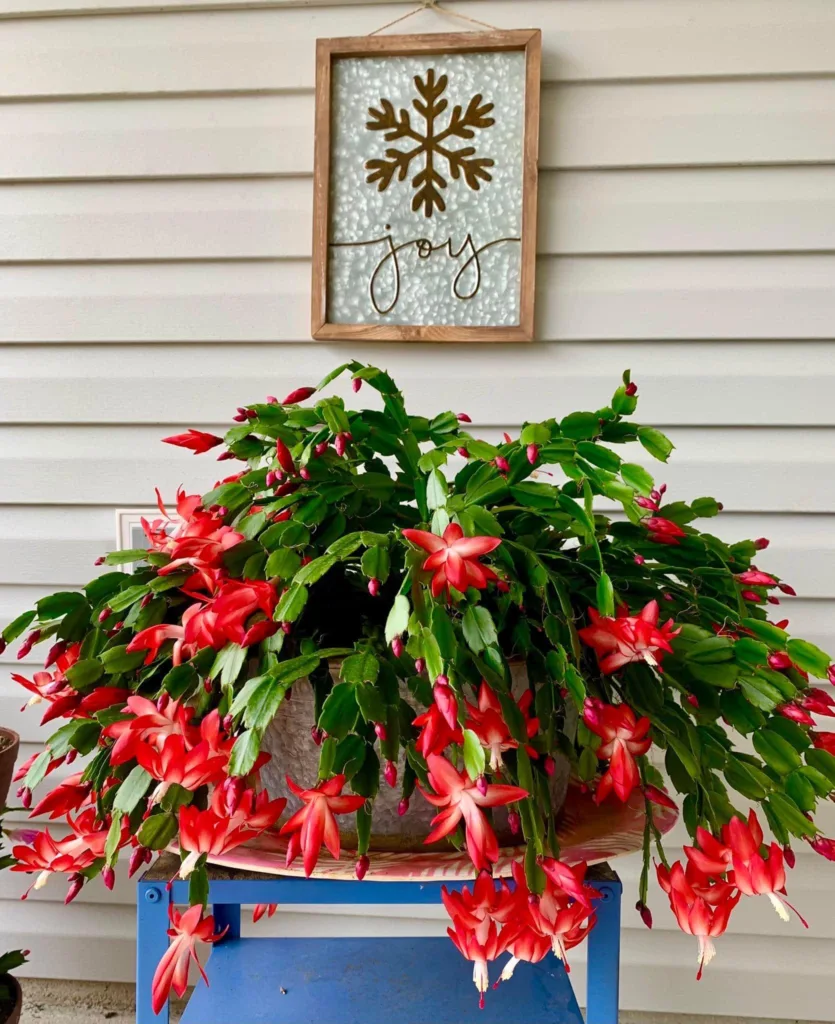Hanging Cactus – Cacti are loved by gardeners for their unique and sometimes bizarre appearance. From spiky to smooth and tall to small, cacti come in all shapes and sizes. However, not all cacti grow in the same way. Hanging cacti, for example, grow downwards and create beautiful cascading arrangements. In this post, we’ll introduce you to different types of hanging cacti and how to care for each of them.
String of Pearls

The string of pearls cactus, also known as Senecio rowleyanus, is a delicate and cute hanging cactus with small, spherical leaves that resemble pearls on a string. This type of cactus grows best in bright light but needs partial shade in the hottest hours of the day. If left in direct sunlight for too long, the leaves may yellow and start to fall off. Keep the soil moist during summer and reduce watering during winter.
Burro’s Tail Cactus
Burro’s tail cactus, also known as Sedum morganianum, is a trailing succulent with long, thin stems covered in small green leaves. This cactus is best grown indoors as it is sensitive to temperature fluctuations, especially in extreme heat or cold. Water this cactus deeply once the soil is dry, usually every two or three weeks. Burro’s tail tends to be sensitive to overwatering, so be sure not to saturate the soil.
Rhipsalis Hanging Cactus
Rhipsalis, or mistletoe cactus, is a low-maintenance hanging cactus that is great for beginners. These cacti prefer shade or filtered sunlight and need to be watered regularly but not overwatered. Fertilize rhipsalis monthly with a low nitrogen supplement to promote healthy green growth.
String of Bananas Hanging Cactus
The string of bananas, also known as Senecio radicans, is a cute and compact cactus with long, slim leaves that resemble the shape of bananas. This cactus likes bright light but needs to be shielded from hot, direct sunlight. Keep the soil evenly moist in summer, while a good soaking is sufficient in winter.
Fishbone Hanging Cactus

The Fishbone cactus, also known as Epiphyllum anguliger, Zig/Zag or Ric Rac cactus is a unique hanging cactus that grows stunning zig-zag patterned foliage. It is an epiphytic cactus that clings to tree limbs or other plant structures. In its indigenous forest environment, it would receive only dense filtered light. A good bright indirect light spot would be suitable for this cactus. Ensure you water it often and keep the soil slightly moist.
Orchid Cactus
Epiphyllum, commonly known as orchid cactus, is a beautiful hanging cactus that blooms vibrant flowers. These cacti require a lot of light and should be placed in bright, indirect sunlight. When watering, make sure to give them a good soak but let the soil dry out between watering. Fertilize epiphyllums once a month during their growing season, which is usually from late spring to summer.
Night Blooming Cactus
Selenicereus, or night blooming cactus, is a unique and stunning hanging cactus that blooms fragrant white flowers during night time. This cactus prefers bright indirect sunlight and needs to be watered regularly but not overwatered. During its blooming season, which usually occurs in summer, fertilize selenicereus once a month.
Easter Cactus
Hatiora, also known as the easter cactus, is a festive hanging cactus that blooms beautiful pink, purple, or white flowers. This cactus prefers bright indirect sunlight and needs to be watered and fertilized regularly during its growing season from spring to summer. During its dormant season, from fall to winter, reduce watering and fertilizing.
Thanksgiving Cactus

Thanksgiving cactus is a festive hanging cactus that blooms bright pink, red, or white flowers during the holiday season. This cactus prefers bright indirect sunlight and should be watered regularly but not overwatered. Fertilize thanksgiving cactus once a month during its growing season and reduce watering during its dormant season.
Christmas Cactus
Schlumbergera, or the christmas cactus, is a popular hanging cactus that blooms bright red, pink, or white flowers during the holiday season. This cactus prefers bright indirect sunlight and should be watered regularly but not overwatered. Fertilize schlumbergera once a month during its growing season and reduce watering during its dormant season.
Hanging Cactus Tips
Hanging cacti can create a stunning display and add some whimsical charm to any home. The key to caring for a hanging cactus is to understand each type’s specific needs. With bright indirect light or if needed a LED grow light, a well-draining cactus/succulent soil mix, watering when needed, your hanging cacti will thrive in their decorative baskets.
Happy Gardening!
Take the time to check in on your hanging cactus weekly to ensure they have everything they need to live healthily. As your hanging cacti grow, they may require some support, so consider using plant ties or hoops to keep their growth in check. By following the tips and tricks we’ve discussed in this post, you’ll soon have an eye-catching display of lush hanging cacti in your home or garden.
Please be sure to check out my Gardening Blog Post Page for more tips on all types of gardening. Including Seed Starting, Orchids, Water Gardening, Coldframe Gardening, Indoor Bulb Gardening, Hydroponics, Container Gardening, Mums, Herbs, African Violets, planting Bulbs, Flower Gardening, Vegetable and Fruit Gardening, Indoor Houseplants of all kinds, Cactus, Succulents, Hanging plants, Deer resistant plants and even Bird, Bee, Butterfly and Hummingbird Gardens!
